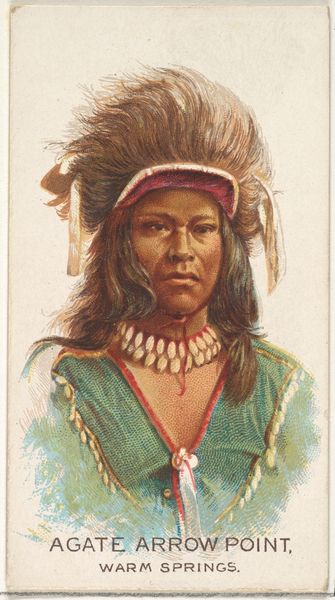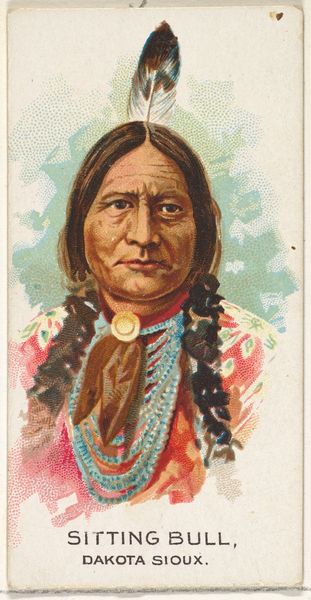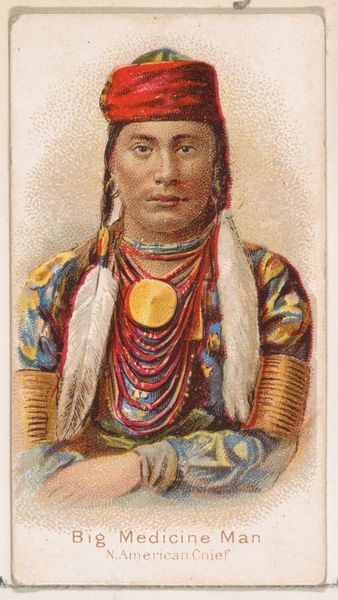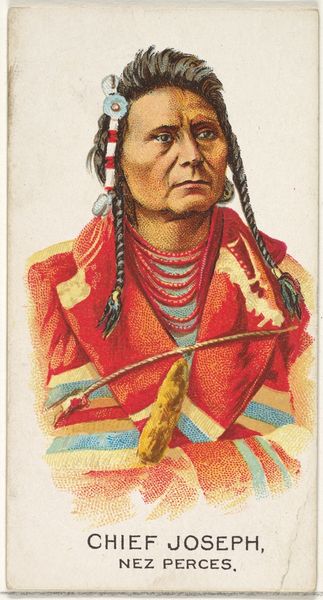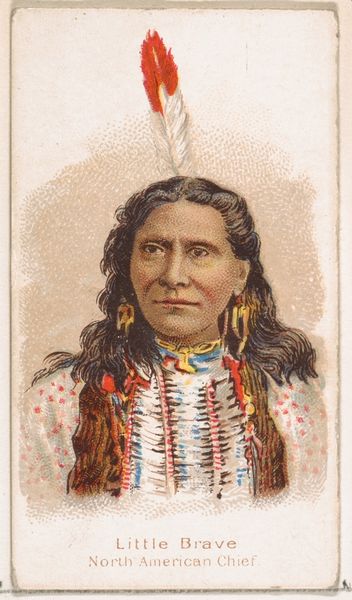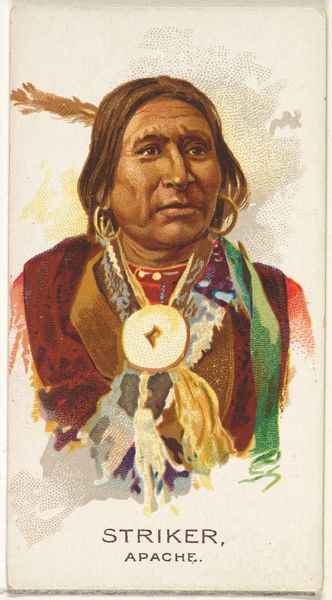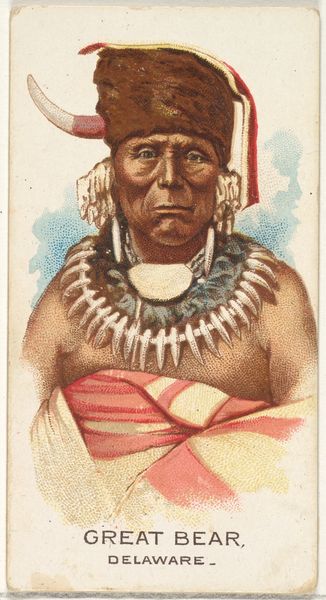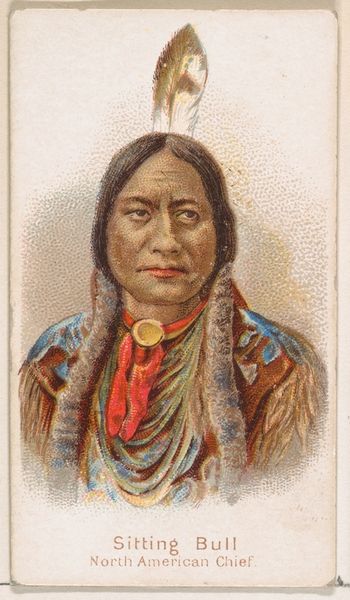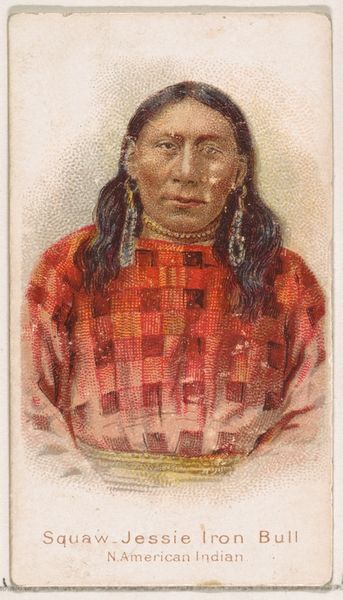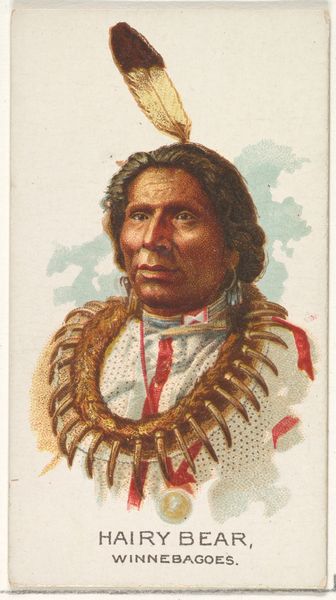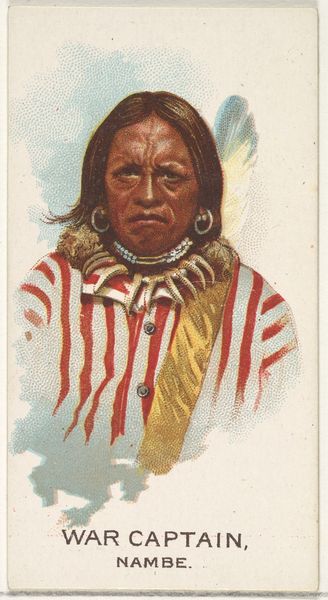
Boy-In-The-Water, North American Chief, from the Savage and Semi-Barbarous Chiefs and Rulers series (N189) issued by Wm. S. Kimball & Co. 1888
0:00
0:00
#
portrait
# print
#
coloured pencil
Dimensions: Sheet: 2 11/16 × 1 1/2 in. (6.8 × 3.8 cm)
Copyright: Public Domain
Curator: What strikes me immediately is the use of color in this piece. The artist’s choice of muted blues, oranges, and reds creates an intriguing harmony that catches the eye. Editor: This is a trade card, part of the Savage and Semi-Barbarous Chiefs and Rulers series (N189) issued by Wm. S. Kimball & Co. in 1888. It depicts a man known as "Boy-In-The-Water," an indigenous North American chief. Curator: I see. Considering that, I appreciate the formal qualities all the more, given it is a print. The cross-hatching used to create shadows adds depth. Editor: These cards were included in cigarette packs and were essentially collectible advertisements. So it’s fascinating how popular imagery of indigenous peoples served the needs of the tobacco industry. Curator: The sitter's composed pose, arms crossed and adorned with traditional garments, adds a regal aspect that’s hard to dismiss. Even his hairstyle speaks volumes. Editor: Certainly, there is tension here. Kimball & Co. profit by circulating stereotyped images even as American expansion and political policies directly threatened the lifestyles of Indigenous peoples at the time. Curator: Do we know anything about this man's community affiliation, or more details about his name, "Boy-In-The-Water?" The narrative suggested by such a name interests me, even though much of that may be obscured. Editor: I don’t believe the card's function extended to the nuance. What do you make of its later presence in places like the Metropolitan Museum of Art? Curator: The museum elevates the aesthetic, transforming it from commercial ephemera into an artifact worthy of study. And of course, its display invites discourse on how we interpret such imagery today. Editor: Absolutely. Studying such prints pushes us to acknowledge uncomfortable legacies, hopefully fostering dialogues around representation and historical narrative. Curator: And from a formal point of view, by encouraging close observation of the colors and compositions within such works, we confront, head-on, the power that visual devices hold, and continue to hold.
Comments
No comments
Be the first to comment and join the conversation on the ultimate creative platform.

